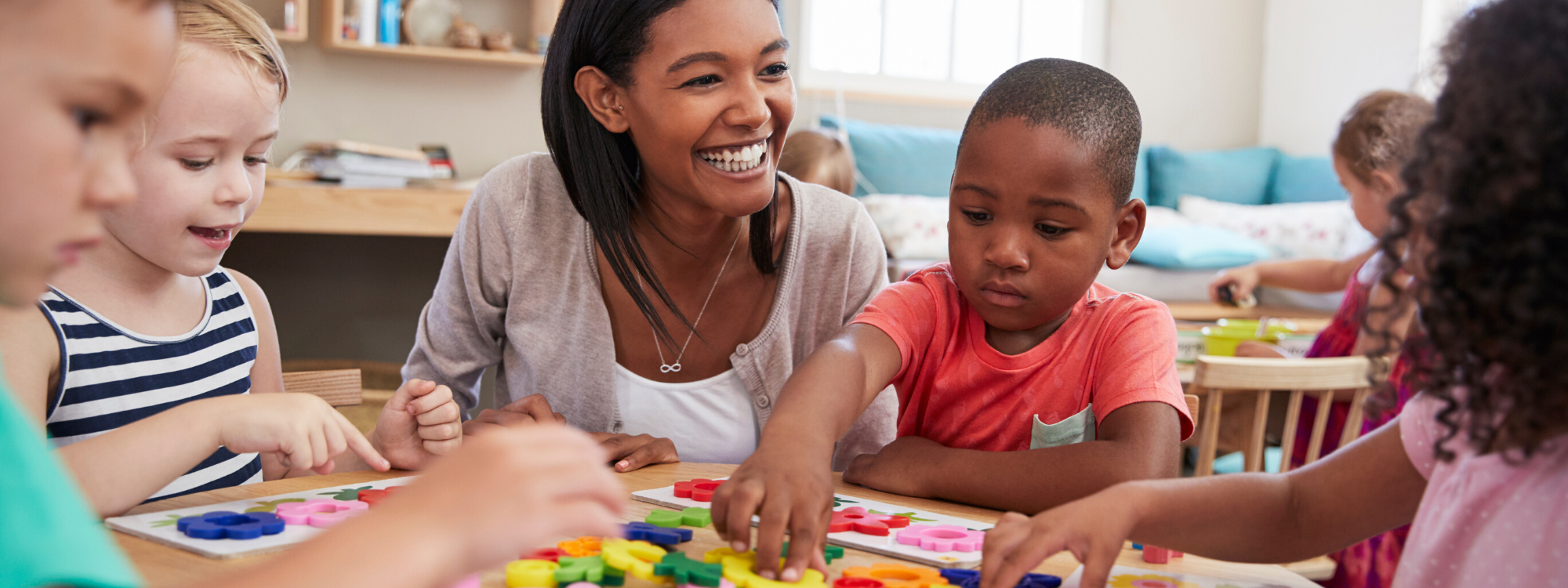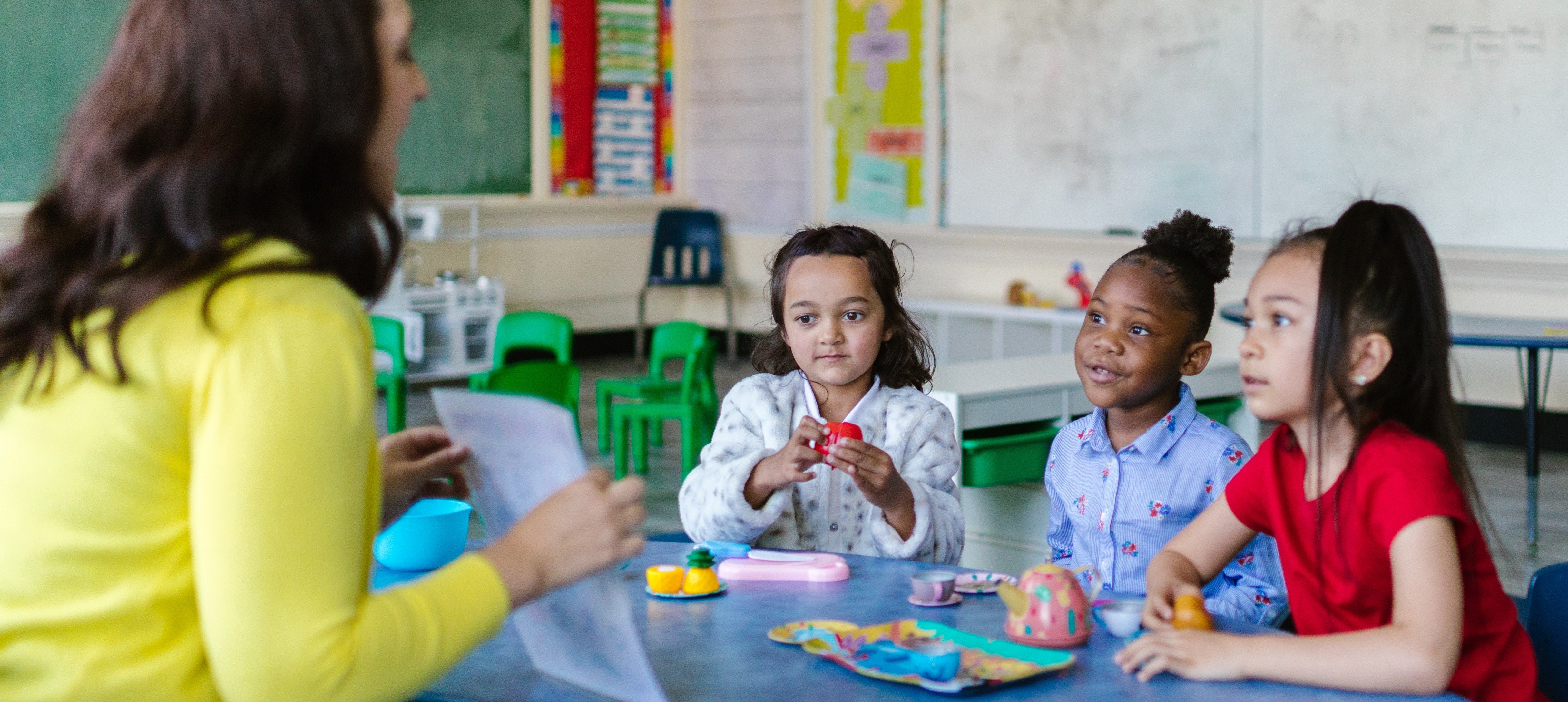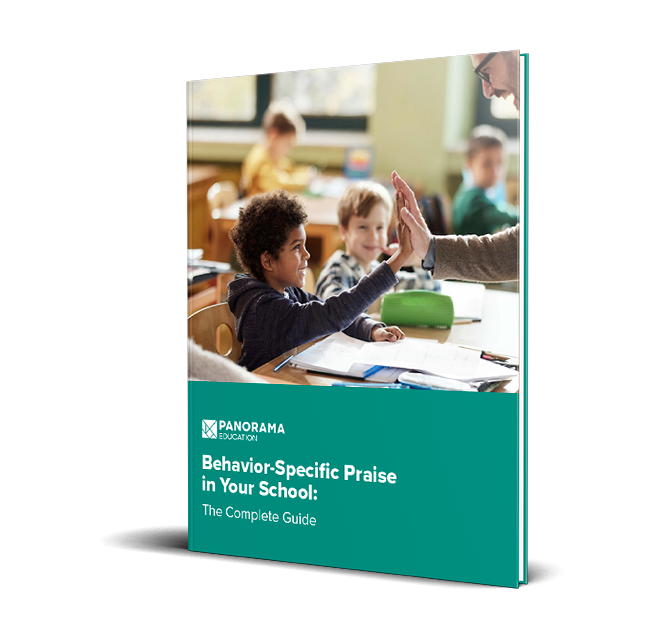Responding to student behavior is one of the biggest challenges educators face today. While classroom and behavior management are critical skills for meeting student behavior needs, many teachers feel unequipped to provide meaningful behavioral interventions in the classroom. And that’s a major issue—especially because issues related to student behavior are a leading cause of teacher burnout.
Additionally, students need meaningful behavioral interventions. As many as 1 in 5 students experience a mental health or behavioral challenge during their K-12 educational career when they would benefit from research-based interventions and supports.
To meet this need head-on, teachers must be equipped to respond to student behavior in meaningful ways. A key component of behavioral interventions is delivering effective, regular, and consistent positive feedback to students in the form of behavior-specific praise. But the adults in your building must feel confident in providing this type of praise.
That’s where this guide comes into the picture. By providing an overview of behavior-specific praise and concrete strategies for delivering praise statements, your educators can feel empowered to address problem behavior and increase positive behavior in the classroom.
Jump to sections of this guide using the table of contents:
- What Is Behavior-Specific Praise?
- How Teachers Can Deliver Effective Behavior-Specific Praise
- Examples of Behavior-Specific Praise in the Classroom Environment
- How Behavior-Specific Praise Will Change Your Classrooms for the Better
What Is Behavior-Specific Praise?
|
Behavior-specific praise is a type of praise that helps students learn what positive behaviors look and feel like, and increases the likelihood students will engage in those behaviors in the future. |
Behavior-specific praise includes three key components:
- A description of a positive social or academic behavior
- Specific identification of the student/group engaging in the positive behavior
- Use of an authentic, positive, and warm tone of voice
When teachers provide in-the-moment praise to students, both the student receiving the praise and their peers learn to identify positive behaviors. And when students see examples of what those behaviors look like—and receive positive reinforcement—they are much more likely to engage in those positive behaviors again.
A research-based classroom management strategy, behavior-specific praise is backed by nearly 30 years of research. Studies have consistently shown that behavior-specific praise is a powerful method of increasing positive behavior in the classroom and of boosting academic success. It’s a well-researched, versatile, useful, and impactful practice that has been studied in diverse classrooms and school settings and with diverse populations of students and teachers for over 50 years.
Teacher praise has proven to be an effective intervention option and a powerful tool to prevent and reduce problem behaviors. Additionally, delivering praise is a low-intensity and easy-to-implement strategy, and can ultimately improve student engagement and learning outcomes.
How Teachers Can Deliver Effective Behavior-Specific Praise
Delivering behavior-specific praise might feel difficult at first, especially if it’s new for your school’s teachers and staff. But using praise statements doesn’t have to be hard. In fact, teachers and staff can start encouraging positive behavior today.
1. Set Classroom Expectations
Before delivering praise, it’s important that teachers set classroom or activity expectations. For example, if students are expected to listen closely to their classmates’ presentations, the teacher should lay that groundwork in advance so that students have an understanding of the appropriate behavior.
2. Give Praise Immediately
Praise is given after expected behavior occurs—it must be contingent on the positive behavior. For example, Joachim uses a new vocabulary word in a sentence. The teacher should immediately provide praise so that Joachim—and his peers—can identify the positive behavior.
3. Identify Students By Name
It’s important that the teacher identifies the student—or group of students—by name. Instead of providing vague feedback applicable to any student—for example, “Don’t touch him!”—the teacher should identify which student or students are performing the appropriate behavior. The teacher could shift “Don’t touch him!” to “Thank you for keeping your hands to yourself, Ana!”
4. Be Specific
Praise should be explicit feedback about the positive behavior—for example, “Ali, thank you for lining up quickly and quietly.” While general praise—like “Good job!” or “Nice work!”—can be useful, research shows that it’s not as effective as specific praise when it comes to reinforcing positive behavior.
5. Be Authentic
Giving genuine praise is key. When you provide praise, you really mean it. Praise should be given for behaviors that are important or valued by the school and community. Instead of saying “You guys are awesome!” a teacher could give praise that aligns with the school’s value of showing respect: “Great job listening to your classmates’ responses, everyone! You are showing me what it means to be respectful.”
Examples of Behavior-Specific Praise in the Classroom Environment
Praise statements will vary based on school expectations, student needs, and learning styles, so each teacher’s use of behavior-specific praise will look different. But here are a couple of examples to get your teachers started thinking about what praise could look like in their classrooms. Because types of praise—and desired behavior—differ by age group, we’ve included examples for elementary, middle, and high school students.
Behavior-Specific Praise for Elementary School Students
- Thank you for sitting quietly, Table 4! I appreciate you showing respect while the other tables show us their projects.
- Amanda, I’m proud of you for sharing with Diego today.
- Good job lining up quietly, everyone! I love that you’re showing me that you’re ready to go to lunch.
Behavior-Specific Praise for Middle School Students
- Kai, thank you for facilitating your group today! You did a good job of encouraging everyone to participate.
- You did a great job listening to the speaker at today’s assembly, Tigers!
- Thanks for cleaning up your lab station, Jasmine! It’s awesome that you’re thinking about our lab safety lessons.
Behavior-Specific Praise for High School Students
- This is a really great outline, Matteo! I really appreciate all the research you’ve done developing your thesis statement.
- Thanks for keeping your phones away during class, everyone. Today’s lesson had some really important information and it’s great that you all paid close attention.
- Awesome job on today’s poetry presentation, Dylan! Thanks for teaching us all about modern sonnets.
Your school’s teachers might find it helpful to include examples of behavior-specific praise statements around the classroom. For example, teachers could post sticky notes on the board with lesson-specific praise stems. Or they could set a goal of using a certain number of praise statements each day, and monitor those statements to ensure students are receiving an equitable amount of positive attention on a weekly basis.
It’s also helpful—especially for younger students—to have reminders of positive behaviors in the classroom. For example, a sign that says “Thank you for raising your hand to speak!” continues to set the expectation for a behavior that is valued by the school and community.
How Behavior-Specific Praise Will Change Your Classrooms for the Better
Using praise statements can be an effective classroom management strategy by encouraging expected behavior in students in a meaningful, intentional way. Research shows that when teachers provide frequent, behavior-specific praise:
- Student engagement increases
- Problematic behaviors decrease
- Student learning outcomes improve
- Teachers form more positive relationships with students
- Classroom climate improves
These benefits can have a major impact on student and teacher wellbeing. When teachers—and administrators—have to spend less time addressing challenging behaviors, they have more bandwidth to focus on student and educator success. And when teachers are able to move beyond behavior challenges in the classroom, they can devote more instructional time to learning and academic success.
Download Panorama's free toolkit to empower educators to use behavior-specific praise



![What Is a Behavior Intervention Plan? [PDF Template]](https://www.panoramaed.com/hubfs/iStock-1994452964.jpg)


